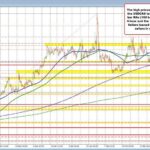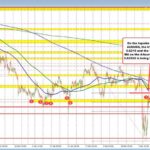
Navigating the USD/CAD Downtrend: Technical Insights and Forecasts for Forex Traders
Tháng 4 10, 2025
AUD/USD Forecast: Navigating Market Volatility and Economic Challenges
Tháng 4 10, 2025Communication Possibilities Amidst U.S.-China Trade Tensions
Recent developments in the trade relationship between the United States and China indicate that, despite rising tensions and significant tariffs, dialogue between U.S President Donald Trump and Chinese President Xi Jinping may still be on the horizon. The ongoing economic conflict has seen the U.S. impose a staggering 125% tariff on certain Chinese imports, while China retaliated with an 84% tariff on U.S. goods. This tit-for-tat escalation raises questions about the potential for constructive communication moving forward.
Persistent Optimism in High-Stakes Negotiations
Despite these high stakes, President Trump has maintained an optimistic view on the possibility of reaching a trade deal with China. Recently, he described Xi Jinping as “a very smart man” and one of the “smartest people in the world.” Such compliments hint at a desire for collaboration and perhaps even mutual respect amidst the economic duress.
Trump’s willingness to engage in negotiations is evident in his comments regarding a potential phone call with Xi, where he has expressed confidence that “we will get a phone call at some point, and then it’s off to the races.” His openness to rekindling communication demonstrates a strategic approach to trade diplomacy, revealing a clear focus on navigating the turbulent waters of U.S.-China relations.
China’s Stance: Resilient Yet Open to Dialogue
On the other side of the table, China has been equally careful in its response to U.S. tariffs, showcasing resilience in the face of economic pressure. Reports suggest that while China is willing to take Trump’s call if initiated, it is steadfast in its stance and unwilling to capitulate under external pressures. This position emphasizes an intricate balance; China seems ready to engage in discussions while reinforcing its economic independence and strength.
Moreover, the focus of U.S. trade policies has shifted significantly towards China, as evidenced by Trump’s decision to pause reciprocal tariffs on all countries except for China. This decision not only underscores the significance of the U.S.-China trade relationship but also reflects a strategic emphasis on negotiations aimed specifically at resolving outstanding trade issues with Beijing. In this context, it is noteworthy that President Xi recently convened over 40 top global CEOs in Beijing to address escalating U.S.-China trade tensions, emphasizing the need for international stability and collaboration. Read more about Xi’s meeting with CEOs here.
Economic analysts speculate that these evolving dynamics—including Trump’s optimistic rhetoric and China’s firm but willing stance—might open doors for a breakthrough in U.S.-China trade negotiations. As global markets watch the situation closely, the nuances of diplomatic communication could play a crucial role in shaping future trade outcomes.
Conclusion: A Pathway to Resolution
In summary, while the trade relations between the U.S. and China remain tense, the potential for renewed dialogue between President Trump and President Xi cannot be dismissed. The willingness on both sides to consider communication is crucial, especially in navigating the complexities of economic policy and global market stability. As the situation develops, continued attention on these diplomatic efforts will be essential for stakeholders aiming to understand the implications of U.S.-China trade relations.
Finding a resolution to these economic tensions may ultimately depend on effective communication and compromise. With substantial tariffs in place, the time for negotiation could be more critical than ever. If both leaders can engage constructively, it may pave the way to a sustainable trade relationship that benefits both nations in the long run.
